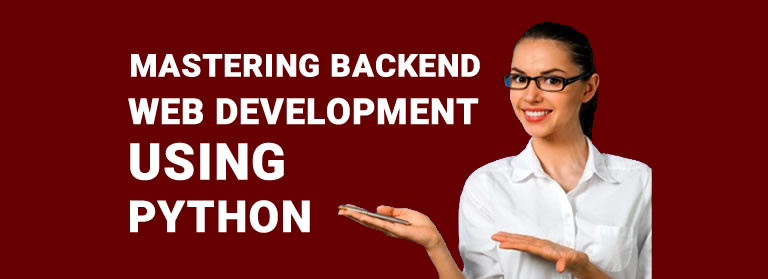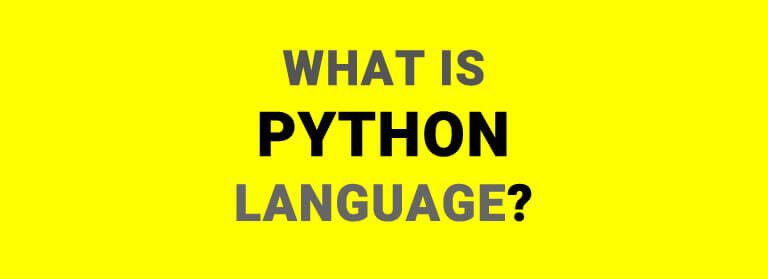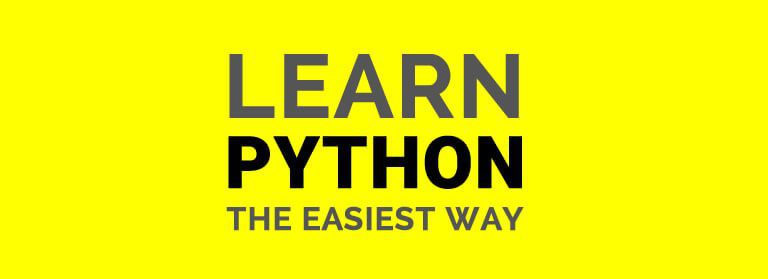Mastering Backend Web Development Using Python Best 2024 Guide


Mastering Backend Web Development Using Python
Mastering Backend Web Development Using Python is the best way to go when it come to developing well you guessed it right the backend of your web application.
In the dynamic landscape of web development, mastering backend development using Python has become a crucial skill. Python’s simplicity, versatility, and extensive libraries make it an ideal choice for building robust and scalable web applications. In this guide, we’ll delve into the essentials of backend web development using Python, covering key concepts, tools, and best practices to empower you on your coding journey.
Understanding Backend Web Development:
let’s dive deep into the backend is where the real magic happens. This ain’t just about fancy visuals and flashy buttons; we’re talking about the nuts and bolts that keep everything running smoothly behind the scenes. Picture this: you’ve got your website or app, and it needs to do stuff like store data, verify users, and handle all that juicy business logic. That’s where backend web development swoops in to save the day.
Now, when it comes to wielding the tools of the trade, Python steps up to the plate like a seasoned pro. With heavy hitters like Django and Flask in its arsenal, Python makes the whole backend gig look like a breeze. These frameworks aren’t just for show; they’re like the secret sauce that adds flavor and finesse to your web services. Think of them as the turbo boosters that kick your development process into high gear, making it both efficient and secure. So next time you’re building the backbone of a killer web app, remember: Python and its frameworks have got your back, making backend web development a walk in the park.
Getting Started with Python:
Before diving into the wild world of backend development, you’ve gotta have your Python game on lock. I’m talking about knowing the ins and outs of this versatile language like the back of your hand. From variables that hold the keys to your data kingdom to slick control structures that keep things running smoothly, mastering the basics is like laying down a solid concrete slab for your skyscraper of a web app.
Think about it like this: you wouldn’t build a house without a sturdy foundation, right? Well, the same goes for coding. Before you start slinging code left and right to tackle those big backend challenges, you’ve gotta nail down the fundamentals. We’re talking about knowing your variables from your data types, your loops from your conditionals, and your functions from your methods. Mastering Backend Web Development Using Python
Once you’ve got those fundamentals down pat, you’ll be ready to tackle the backend like a pro. So, before you start dreaming of building the next big thing on the web, make sure your Python skills are up to snuff. Trust me, it’ll pay off big time in the long run.
Choosing the Right Framework For Mastering Backend Web Development Using Python:
Python, oh Python, how many wonders do you hold in your coding kingdom? When it comes to backend web development, Python stands tall as a titan, offering a plethora of frameworks to suit every coder’s needs and preferences. From the mighty Django to the nimble Flask, each framework brings its own set of strengths and capabilities to the table, making the choice of which one to use a crucial decision for any aspiring web developer.
Let’s start with Django, the heavyweight champion of the **backend** world. Known for its “batteries-included” approach, Django comes fully loaded with all the tools and features you could ever need to build robust and scalable web applications. With Django, you get everything from built-in authentication and admin panels to powerful ORM (Object-Relational Mapping) for database management. It’s like having a Swiss Army knife for **backend** development, ready to tackle any challenge you throw its way. Plus, Django’s emphasis on convention over configuration means you can get up and running quickly without having to reinvent the wheel every time.
But what if you’re looking for something a bit more lightweight and flexible? Enter Flask, the sleek and minimalist framework that’s perfect for smaller projects and rapid prototyping. Unlike Django, Flask doesn’t come with all the bells and whistles out of the box. Instead, it provides a solid foundation and lets you pick and choose the components you need, making it ideal for developers who prefer a more hands-on approach. With Flask, you have the freedom to customize your **backend** however you see fit, without being weighed down by unnecessary features or complexity.
So, how do you choose between Django and Flask? Well, it all comes down to your project requirements and personal preferences. If you’re building a large-scale web application with lots of moving parts, Django might be the way to go. Its built-in features and conventions can help streamline your development process and ensure scalability as your project grows. On the other hand, if you’re working on a smaller project or you value simplicity and flexibility, Flask might be more your speed. Its lightweight nature and modular design make it easy to get started and adapt to changing requirements on the fly. Mastering Backend Web Development Using Python
In the end, whether you choose Django or Flask (or any of the other Python frameworks out there), the most important thing is to pick a tool that fits your needs and helps you get the job done. With Python’s rich ecosystem of **backend** frameworks at your disposal, you’ll have everything you need to bring your web development dreams to life. So go forth, young coder, and may the **backend** be ever in your favor! Mastering Backend Web Development Using Python
Setting Up Your Development Environment:
The journey of a developer continues! You’ve made the bold decision to choose your backend framework—be it the robust Django or the nimble Flask. But hold onto your hats, because we’re just getting started on this wild ride. The next stop on our adventure? Setting up your development environment like a boss. Mastering Backend Web Development Using Python
Now, you might be wondering, why bother with setting up a development environment in the first place? Well, my eager coder friend, let me tell you: it’s all about consistency and reproducibility. Picture this: you’re working on your project on your shiny new laptop, everything’s running smoothly, and you’re making progress by leaps and bounds. But then, disaster strikes—you need to switch to a different machine, maybe a colleague’s or a client’s, and suddenly, everything goes haywire. Dependencies are missing, versions don’t match up, and chaos reigns supreme. That’s where virtual environments come in to save the day.
Virtual environments are like little isolated bubbles where your project can live and breathe without interference from the outside world. Think of them as miniaturized versions of your entire development environment, complete with all the necessary dependencies and configurations neatly packaged up. By keeping each project in its own virtual environment, you ensure that everything stays nice and tidy, with no messy conflicts or surprises. Mastering Backend Web Development Using Python
But how do you create these magical virtual environments, you ask? Fear not, for Python comes equipped with its very own tool for the job: venv. With just a few simple commands, you can create a brand spanking new virtual environment for your project faster than you can say “pip install”. Once inside your virtual environment, you’re free to install and manage dependencies to your heart’s content, safe in the knowledge that you’re not messing with the rest of your system.
Ah, but what about all those lovely Python packages you’ll inevitably need to bring your project to life? That’s where pip, Python’s trusty package manager, comes into play. With pip by your side, installing and managing dependencies is as easy as pie. Need to install Django or Flask? Just type “pip install django” or “pip install flask”, and voila! You’ve got yourself a shiny new package ready to go. And with pip’s support for versioning and requirements files, collaborating with teammates and sharing your project with the world has never been easier.
So there you have it, my intrepid developer friend: the keys to setting up your backend development environment like a pro. With virtual environments to keep things neat and tidy, and pip to handle all your package management needs, you’ll be well on your way to coding greatness in no time. So go forth, brave coder, and may your projects be bug-free and your dependencies always up-to-date! Mastering Backend Web Development Using Python
Building a RESTful API with Flask:
In today’s digital era, web applications have become an integral part of our daily lives, facilitating seamless interactions and transactions across the internet. Behind the scenes of these applications lies the intricate world of backend development, where frameworks like Flask shine bright in enabling the creation of RESTful APIs.
RESTful APIs, or Representational State Transfer Application Programming Interfaces, serve as the communication bridge between the frontend and backend of web applications. They allow clients, such as web browsers or mobile apps, to interact with server-side resources in a standardized and efficient manner. When it comes to implementing RESTful APIs in Python, Flask emerges as a top contender, thanks to its simplicity, flexibility, and powerful features.
At its core, Flask is a lightweight and minimalist web framework that prioritizes simplicity and ease of use. Unlike heavyweight frameworks, such as Django, Flask provides developers with the freedom to structure their applications as they see fit, making it an ideal choice for building RESTful APIs. With Flask, defining routes, handling requests, and serializing data are straightforward tasks, thanks to its intuitive syntax and expressive API.
One of Flask’s standout features is its robust routing system, which allows developers to map URLs to specific functions, known as view functions, with ease. By decorating Python functions with route decorators, developers can define the endpoints of their API and specify the HTTP methods they support, such as GET, POST, PUT, and DELETE. This declarative approach to routing simplifies API development and promotes clean, organized code. Mastering Backend Web Development Using Python
Handling requests in Flask is equally straightforward, thanks to its built-in support for request and response objects. When a client sends a request to an API endpoint, Flask automatically parses the request data and provides developers with convenient access to headers, parameters, and payloads. This enables developers to extract relevant information from incoming requests and process them accordingly, whether it’s validating user input, querying a database, or performing business logic.
Flask’s support for data serialization is another feature that sets it apart in the realm of backend development. With the help of third-party libraries like Flask-RESTful or Flask-RESTPlus, developers can effortlessly serialize Python objects into JSON or XML representations, making it easy to communicate data between the frontend and backend. This serialization process is essential for ensuring interoperability and consistency across different client platforms and devices.
In addition to its core features, Flask boasts a vibrant ecosystem of extensions and plugins that further enhance its capabilities for building RESTful APIs. From authentication and authorization mechanisms to request validation and error handling, Flask’s ecosystem offers a plethora of tools and utilities to streamline API development and improve developer productivity.
In conclusion, Flask’s simplicity and flexibility make it an excellent choice for building RESTful APIs in Python. By leveraging Flask’s intuitive syntax, robust routing system, and support for data serialization, developers can create powerful backend services efficiently and effectively. So whether you’re building a simple microservice or a complex web application, Flask has got you covered in the world of backend web development. Mastering Backend Web Development Using Python
Scaling Your Application with Django:
As your web application grows, scalability becomes a critical consideration. Django’s built-in features, such as ORM (Object-Relational Mapping) and middleware support, streamline the development process and facilitate scalability. Utilize Django’s admin interface for managing application data and leverage caching mechanisms to optimize performance, ensuring your application can handle increased traffic and workload. Mastering Backend Web Development Using Python
Securing Your Backend:
Security is paramount in backend development, especially when handling sensitive user data. Implement authentication and authorization mechanisms to control access to your application’s resources effectively. Utilize industry-standard encryption algorithms and secure coding practices to safeguard against common security threats, such as SQL injection and cross-site scripting (XSS) attacks.
Optimizing Performance:
In the competitive world of web development, optimizing performance is key to delivering exceptional user experiences. Leverage profiling tools to identify performance bottlenecks and optimize critical code paths for maximum efficiency. Implement caching strategies, utilize asynchronous processing, and leverage content delivery networks (CDNs) to minimize latency and enhance scalability, ensuring your backend can handle demanding workloads with ease. Mastering Backend Web Development Using Python
Backend web development using Python offers a powerful and versatile approach to building modern web applications. By mastering Python fundamentals, choosing the right framework, and adhering to best practices, you can develop robust, scalable, and secure backend services that meet the demands of today’s digital landscape. So, roll up your sleeves, dive into the world of backend development using Python, and unlock endless possibilities for innovation and creativity.
Do you want to learn Python? My Python course on udemy is the most popular, highest rated and will give you a comprehensive Python learning experience. 1500 students has already enrolled since it’s launch in 2023! and learning Python flawlessly! Click on the button below and enroll today.
Recent Posts
- How Difficult Is To Learn Python in Terrific 2024?
- A Smarter Way to Learn Python in 2024
- Deep Learning With Python Second Edition Best Review 2024
- How to Uninstall Python on Mac 101? Best Technique
- How to Print a Variable in Python Best 2024 Guide






Responses